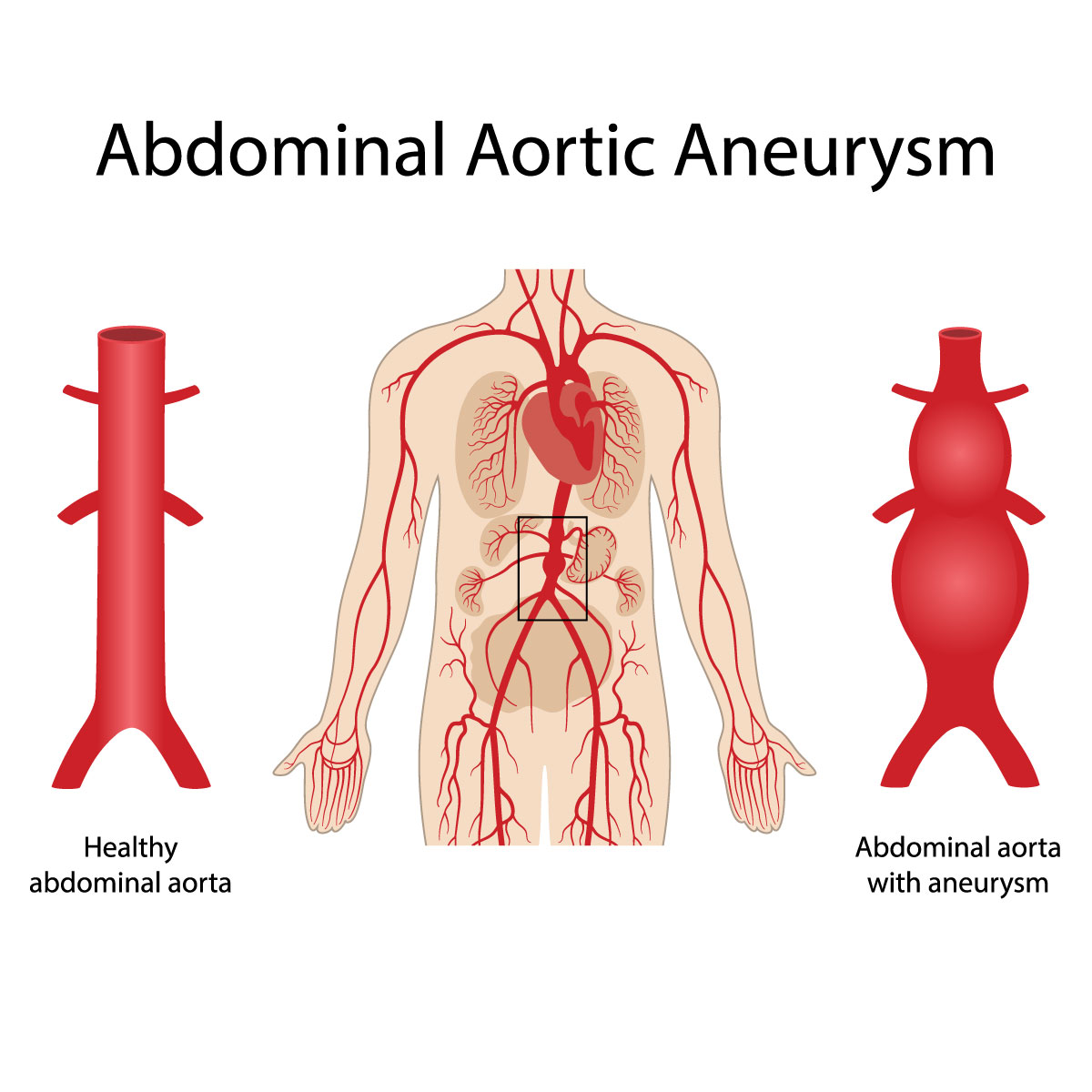
Abdominal aortic aneurysm


Overview
An aortic aneurysm is defined as abnormal widening or bulging of the wall of the aorta. The aorta is the largest artery that carries blood from the heart to the body. This is called an abdominal aortic aneurysm (AAA) when it happens in the part of aorta that is in the abdomen. The ruptured abdominal aortic aneurysm can cause fatal bleeding.
There are many treatments for abdominal aortic aneurysms, depending on the rupture’s size and the disease’s progression which include watchful waiting and emergency surgery.
Symptoms
Most patients with abdominal aortic aneurysm have no symptoms until the aneurysm is close to rupture, it may manifest the followings:
- Abdominal pain which is deep and persistent
- Back pain
- A pulsing sensation in the abdomen (similar to the heartbeat)
If you have any of these symptoms, seek emergency medical care immediately:
- Sudden or severe pain in the abdomen
- Shortness of breath
- Loss of consciousness
- Rapid heartbeat
Causes
An abdominal aortic aneurysm occurs in the abdominal part of the aorta. However, aortic aneurysm can be found in any part of the whole aorta. It can be caused by a variety of factors.
The disease-provoking factors include:
- Atherosclerosis: where the arteries get thickened due to buildups of fat and other substances inside a blood vessel.
- High blood pressure: which can damage and weaken the aortic walls.
- Blood vessel diseases: which causes inflammation of blood vessels.
- Bacteria or fungi-infected aorta: which rarely happens.
Risk factors
There are many risk factors for abdominal aortic aneurysms, including:
- Smoking: which is the high risk factor as it can weaken the aortic walls and increase the risk of developing aortic aneurysm and aneurysm rupture. The risk also depends on how many years you have smoked or chewed tobacco. Frequent male smokers aged 65-75 are recommended to have a one-time abdominal aortic aneurysm screening ultrasound in the abdomen to look for any risk of the disease.
- Age: as abdominal aortic aneurysms are most often found in people aged 65 and older.
- Gender: with abdominal aortic aneurysms more frequently found in men than women.
- Race: with white people being at a higher risk of developing the disease.
- Genetics: as having a family member who has or used to have abdominal aortic aneurysms increases the risk of developing the disease.
In case of being at risk of an aortic aneurysm, some other treatments might also be recommended, such as blood pressure medications which also help relieve stress on weakened arteries.
Contact Information
service@vejthani.com






















